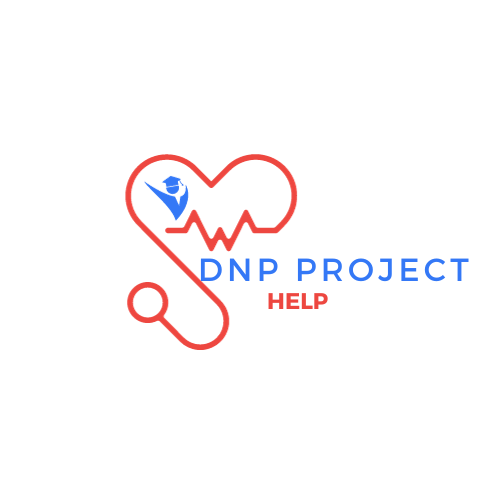
A Business Case for Quality is a document written to convince a health system’s stakeholders that a project will benefit their organization and will be sustainable. The document identifies a unit/department/service line problem or opportunity, a proposed solution and alternatives, the cost, the project stakeholders, and the risks and benefits of pursuing the solution. It addresses the who, what, why, and how of specific business issues (Dhiman, 2023).
Based on the class discussion, lecture, and assigned readings, select a quality improvement project initiative that if implemented would improve quality in a department, unit, clinic, or other health setting. If possible, consider a “real scenario” for improvement within a health system that you are working in (or have worked in). The quality improvement initiative (business case) needs to align with the health system’s strategic initiatives (Strategic Organizational Assessment); is feasible given the financial parameters of the institution; and is defined by a strategic plan with measurable goals.
Along with the assignment description, references, and rubric create a business case for quality improvement. The paper is limited to no more than 10 pages, not including the title page, references, and appendix.
We do not expect that you do a full readiness assessment for this assignment – some of the information would not be available – however, reviewing the project plan templates will provide information on what you might want to consider.
There is also a considerable amount of information in the IHI paper on concepts that you need to address (such as value, drivers for optimizing the business case, steps for developing the business case). You should review the slides that were used when discussing developing a business case in class and the case examples provided in the module.
This assignment is intended to be a business proposal that you would submit to the leadership of your organization because you want to develop/implement a quality improvement project.
Put tables and figures into the body of the proposal if they are best communicated there. Use the appendix for supplemental material. As an example, cost-benefit analysis (CBA)/return on investment (ROI) (financial metric) should be discussed in the body of the paper, but you can also provide the details for how you calculate the ROI in the appendix.
Objectives
- Describe the components of a business case for quality.
- Analyze the business case for quality initiatives.
- Identify the costs and benefits of a proposed quality initiative and calculate the ROI
How to write a Business Case
Outline the Implementation Process:
Planning the implementation process, you need to define:
- Resources needed (Costs: Direct, Indirect, Opportunity)
- Timeline from initiation till end (Gantt chart)
- Risks and how to mitigate (Barriers and Facilitators)
- Milestones and when they will be achieved (Gantt chart)
- Total cost involved and how much will be used by when (timeline)
Rubric
Business Case for Quality
| Criteria | Ratings | Pts | |
| This criterion is linked to a Learning Outcome Introduction Background of the unit/organization/ where quality improvement is recommended. Briefly describe the healthcare issue’s organization/unit (Strategic Organizational Assessment). Provide enough information to link the project’s need to the health system. This could be the larger perspective you will drill down at your local need | 20 pts Full Marks | 0 pts No Marks | 20 pts |
| This criterion is linked to a Learning Outcome Background and Project Need (Larger Perspective) – Description of the local challenge/problem that requires improvement. Identify the issue to be resolved as demonstrated through the organizational performance indicators. (i.e., if it is a clinical quality project, which organizational performance indicator shows the problem and how much is it off target). This is your opportunity to explain why your local project is essential and why leadership and stakeholders should consider pursuing this initiative.-Examples may include improving pressure injuries to reduce hospital length of stay and readmission, improving patients self-monitoring of blood pressure to reduce hospitalization, and improving medication management, to name a few. | 20 pts Full Marks | 0 pts No Marks | 20 pts |
| This criterion is linked to a Learning OutcomeProject Description (Local) – Quality improvement initiative description, including 1. How the initiative fits the organization’s strategic plan and established goals; 2. Specific outcome, process, and structure goals. Required resources: human resources, supplies and equipment, technology, construction and maintenance, and financial resources. | 20 pts Full Marks | 0 pts No Marks | 20 pts |
| This criterion is linked to a Learning OutcomeCost Benefit Analysis – Analysis of the cost of the quality improvement initiative and its ultimate fiscal impact (Potential cost-benefit analysis (CBA) and return on investment (ROI). Provide costs, benefits, and return on investment. This could be cost avoidance or cost improvement. Use the CBA worksheet (table) with a brief description. | 20 pts Full Marks | 0 pts No Marks | 20 pts |
| This criterion is linked to a Learning Outcome Conclusion – A persuasive statement(s) about the benefits, costs, and return on investment that would possibly “sell” the project idea (plan). Consider why leadership, first-line staff, and stakeholders want to provide resources to implement the plan (business case proposal). | 10 pts Full Marks | 0 pts No Marks | 10 pts |
| This criterion is linked to a Learning Outcome Professionalism of Paper – Free of grammatical errors; uses APA correctly; appropriately referenced Links concepts and appropriately used headings and subheadings. | 10 pts Full Marks | 0 pts No Marks | 10 pts |
| Total Points: 100 | |||
Background articles, templates
Agency for Healthcare Research and Quality (AHRQ) (n.d.). Build a business case for quality improvement: Slide presentation. https://www.ahrq.gov/hai/tools/mvp/modules/cusp/build-business-case-slides.htmlLinks to an external site.
Institute for Healthcare Improvement (IHI). Optimizing a business case for safe health care: An integrated approach to finance and safety. http://www.ihi.org/resources/Pages/Tools/Business-Case-for-Safe-Health-Care.aspxLinks to an external site. This toolkit includes a white paper on making a business case for safe care, glossary of terms, a business case template, and a sample business case.
Johnson, JE, Goodman, P, Dinnen, JM. (2023). The DNP EBP project: The importance of project valuation. In J Nurs Health Care Res 6: 1391. DOI: 10.29011/2688-9501.101391Links to an external site.
Leatherman, S., Berwick, D., Iles, D., Lewin, L.S., Davidoff, F., Nolan, T., & Bisognano, M. (2003). The business case for quality: Case studies and an analysis. Health Affairs, 22(2), 17-30. hlthaff.22.2.17.pdfDownload hlthaff.22.2.17.pdf
Shah, A. & Course, S. (2018). Building the business case for quality improvement: A framework for evaluating return on investment. Future Healthcare Journal, 5(2), 132-7. http://dx.doi.org/10.7861/futurehosp.5-2-132Links to an external site.
Waxman, K.T. (2023).Financial and business management for the Doctor of Nursing Practice. (3rd Ed.), New York, NY: Springer Publishing Company.
- Capella, E. Chapter 13, Project management for nurse leaders. (pp 317- 343)
- Maxworthy, J. Chapter 9, Ensuring quality care while controlling costs. (pp 221-246).
- Shneyder, M. Chapter 7, Strategic planning and capital budgeting. (pp169-197).
- Waxman, K.T., Delucas, C. & Barter. Chapter 15, Entrepreneurship and innovation for nurse leaders: Developing a business case. (pp 377-394)
Masters R, Anwar E, Collins B, et al. (2017) Return on investment of public health interventions: A systematic review J Epidemiol Community Health 2017;71:827–834. Cost-Benefit Analysis Public Health Interventions.pdf
Rosks, S. et.al. (2020). Cost and effects of integrated care: a systematic literature review and meta-analysis. Eur J Health Econ.Links to an external site. 2020; 21(8): 1211–1221. Published online 2020 Jul 6. doi: 10.1007/s10198-020-01217-5 Links to an external site.
Thusini et al. (2022) The development of the concept of return-on-investment from large-scale quality improvement programmes in healthcare: An integrative systematic literature review. BMC Health Services Research 22:1492. https://doi.org/10.1186/s12913-022-08832-3Links to an external site. Download Cost-Benefit Analysis Public Health InterventionsCost-Benefit Analysis Integrative Review.pdf
Examples of Business Cases
American Nurses Association. (2018). The Business Case for Higher Levels of Nurse Staffing in the Hospital Setting. https://www.nursingworld.org/~4a58b1/globalassets/practiceandpolicy/nurse-staffing/ana-cost-calculator.pdfLinks to an external site.
Carman, M. Church, C., & Africa, L. (2021). Nurse residency programs: Building and communicating the business case. Nurse Leader, 19 (3), 276-280. https://doi.org/10.1016/j.mnl.2021.03.005Links to an external site.
Drenkard, K. N. (2022). The Business Case for Magnet® Designation: Using Data to Support Strategy. The Journal of Nursing Administration, 52(9), 452-461. https://doi.org/10.1097/NNA.0000000000001182Links to an external site.
Haas, S., Conway-Phillips, R., Swan, B.A., DeLa Pena, L., Start, R., & Brown, D.S. (2019). Developing a business case for the care coordination and transition management model: Needs, methods, and measures. Nursing Economic$, 37(3), 118-125. Haas NE 2019.pdfDownload Haas NE 2019.pdf
Needleman, J., Buerhaus, P.I., Stewart, M., Zelevinsky, K., & Mattke, S. (2006). Nurse staffing in hospitals: Is there a business case for quality? Health Affairs, 25(1), 204-211. Needleman HA 2006.pdfDownload Needleman HA 2006.pdf
Opperman, Cathleen DNP, RN, NPD-BC, NEA-BC, CPN; Liebig, Debra MLA, BSN, RN, NPD-BC; Bowling, Judith PhD, MHA, RN, NPD-BC; Johnson, Carol Susan PhD, RN, NPD-BC, NE-BC, FAAN; Stiesmeyer, Johanna DNP, MS, RN, NPD-BC; Miller, Susi MLIS, AHIP. Measuring Return on Investment for Professional Development Activities: Literature Update and the Ongoing Challenge. Journal for Nurses in Professional Development 38(6):p 333-339, 11/12 2022. | DOI: https://doi.org/10.1097/NND.0000000000000921Links to an external site.
State of Texas Reports – Supply & Demand, etc.
Campbell_directors_2022_Texas_DNP_Conference.pdfDownload Campbell_directors_2022_Texas_DNP_Conference.pdf
Champion_2022_Texas_DNP_Conference.pdfDownload Champion_2022_Texas_DNP_Conference.pdf
Lauer_2022_Texas_DNP_Conference.pdf
Related Articles:


